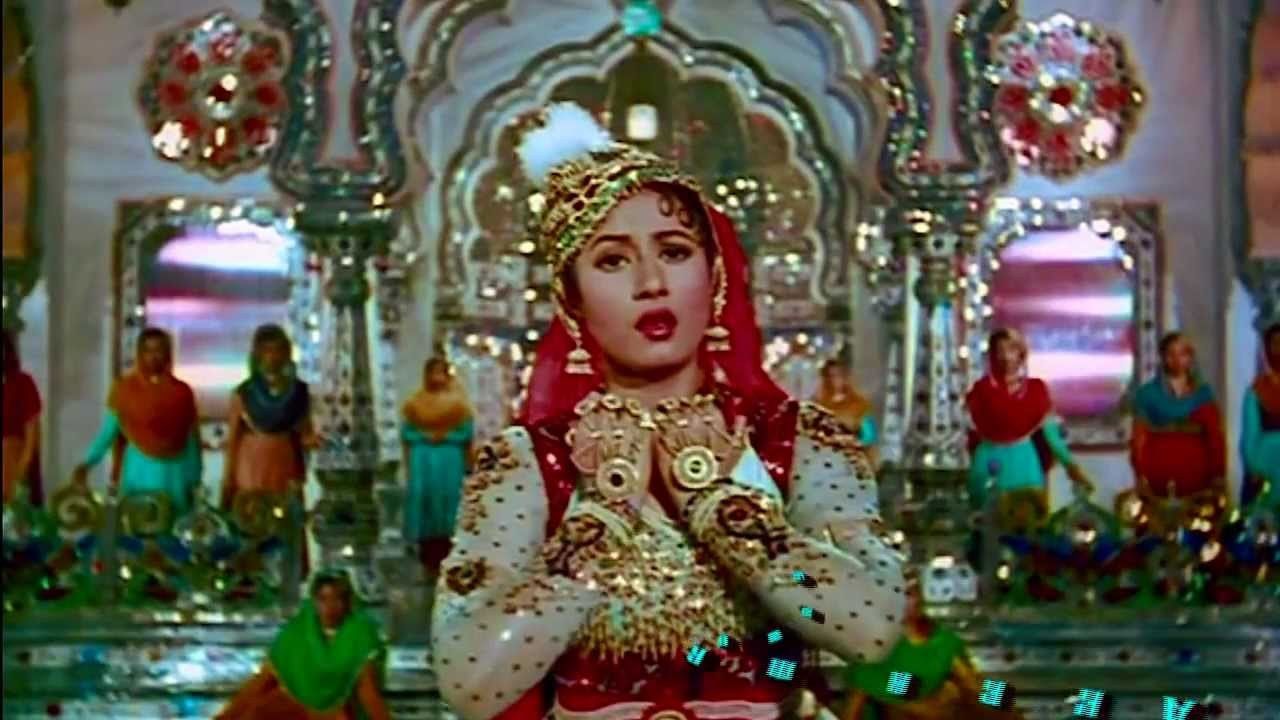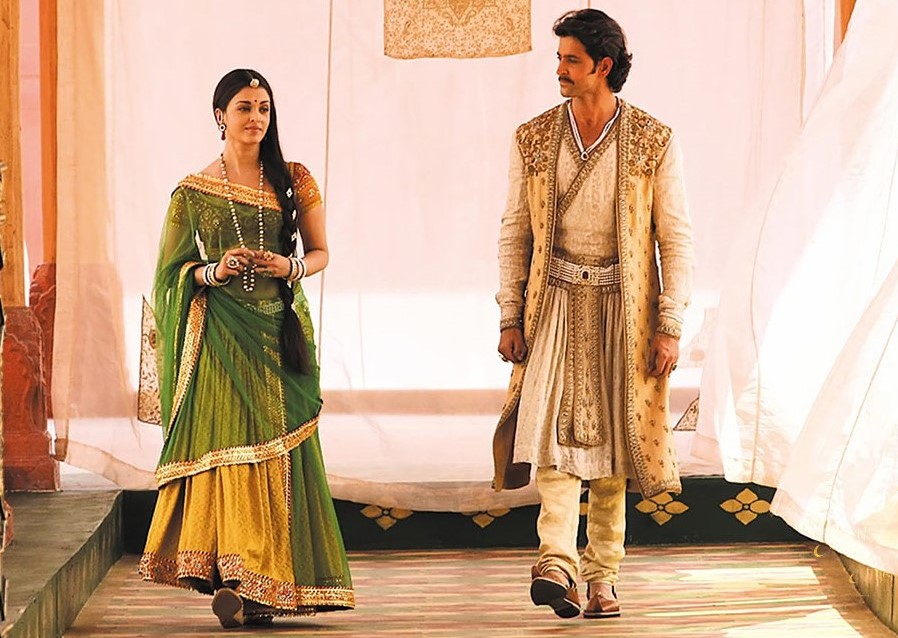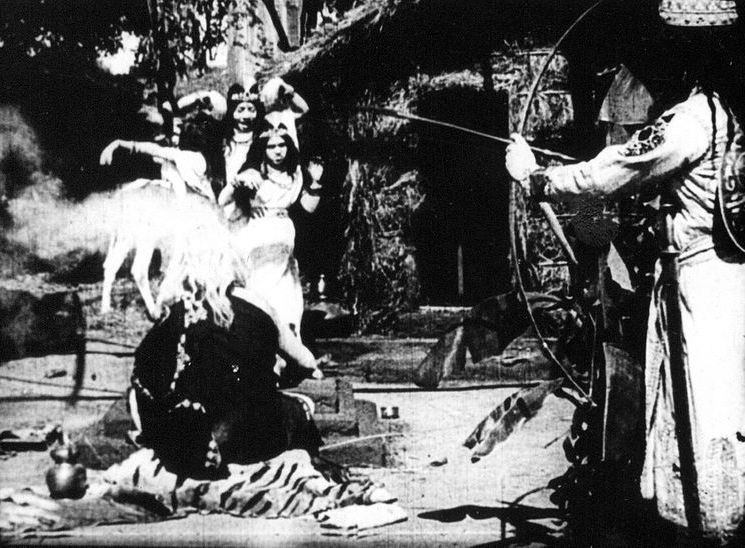
Lavish costumes, opulent production sets, mammoth star cast, and large-scale battle scenes have long been the hallmark of epics in cinema. Embellish this with a period setting and elaborate dance sequences, and you have your trademark Bollywood magnum opus. While not always historically accurate (looking at you, Mohenjo Daro), these movies are as entertaining as they are magnificent. If the creative license of directors and screenwriters does not hurt your sentiments (ahem), #DSSCRecommends a series of historical epics that you can enjoy over the weekend.
Jodhaa Akbar
Director: Ashutosh Gowarikar | 2008

Image: aishwarya-spice.com; Aishwarya Rai Bachchan and Hrithik Roshan in Jodhaa Akbar
Set in the 16th century, Jodhaa Akbar is the love story of Akbar, the third Mughal emperor, and his wife Jodhaa Bai, a Rajput princess. The film details how their marriage beautifully grows from a strategic political alliance into that of companionship. This Hindu-Muslim love story emphasises Akbar’s philosophy of religious tolerance (Din-i Ilahi), which is more relevant today, than ever before.
The historical romance that took Haider Ali and Ashutosh Gowarikar nine months to pen was supplemented by inputs from Maharaja Bhawani Singh of Jaipur and his spouse, Maharani Padmini Devi to make it as authentic as possible. Albeit long (214 minutes), the grand visuals of palaces and landscapes mindfully crafted by Gowariker and cinematographer Kiiran Deohans, nuanced performances, the elaborate costumes by Neeta Lulla, and memorable tunes by Oscar-winning composer A.R. Rahman will have you captivated. Starring Hrithik Roshan, Aishwarya Rai Bachchan, Ila Arun, and Sonu Sood in key roles, the film won numerous awards, including Best Picture and Best Actor at Filmfare and IIFA.
Fun Fact: Nearly 400 kg of gold was used to create the jewellery for the principal cast.
Mughal-e-Azam
Director: K. Asif | 1960
Historical inaccuracies notwithstanding, Mughal-e-Azam is considered one of the finest films of Indian cinema. It is also one of the highest-grossing films of all time in India. The film stars Prithviraj Kapoor as Akbar, Dilip Kumar as Salim and Madhubala as Anarkali. Because hierarchies of power and class dictated the norm in the 16th century, Salim and Anarkali’s tragic love affair was doomed to fail.
Tales of difficulties that the film faced throughout its two-decade long production are as legendary as the film itself. Kumar wore full military armour in the heat of Rajasthan, Kapoor had to walk barefoot in the Thar desert, while Madhubala struggled with a heart problem. With music composed by Naushad, this National Award winner set standards that are hard to surpass. Originally made in black & white, the film was digitally coloured and re-released in 2004, making a new generation fall for Madhubala’s grace. The song ‘Pyaar Kiya Toh Darna Kya’ is particularly memorable for the way it brings Sheesh Mahal to life when Anarkali, spinning in her kathak trance, is reflected in the mirrors — a scene echoed in Bajirao Mastani.
Fun Fact: Ashutosh Gowarikar initially wanted to remake this classic, but Haider Ali convinced him to focus his lens on Jodhaa Akbar instead.
Bajirao Mastani
Director: Sanjay Leela Bhansali | 2015

Image: thenational.ae; Deepika Padukone in Bajirao Mastani
Based on Nagnath S. Inamdar’s novel Raau, Bhansali’s passion project was conceived long before he directed his first film in 1996, Khamoshi. The film pays tribute to the love triangle between Bajirao I and his two wives, Kashibai and Mastani.
Bajirao Mastani was unanimously praised for its direction as well as performances. Priyanka Chopra and Ranveer Singh trained for months to perfect their Marathi accent, whereas Deepika Padukone learned sword-fighting, kathak, and Kalaripayattu. Because Bhansali had dreamed this film for so long, he left no stone unturned to achieve the finesse he had carefully envisioned. Historian Ninad Bedekar was brought on board to enrich Prakash K. Kapadia’s screenplay that witnessed numerous revisions for twelve years to accommodate the changing ways of making and viewing films. The pre-production work alone required 19 months to finish. However, Sriram Iyengar and Sujeet Sawant, the production designers, had been conducting their independent research on Maratha architecture since 2004. The song ‘Deewani Mastani’ was shot using a limited colour pallette; the dancers merge with the golden background of the Aaina Mahal, leaving only Singh, Padukone, and Chopra to stand out.
Fun Fact: To make the film look as realistic as possible, Bhansali worked with natural lighting. Additionally, around 30,000 oil lamps and torches — instead of electric bulbs — were used to light up every scene, including the song ‘Pinga’.
Raja Harishchandra
Director: Dadasaheb Phalke | 1913

Image: publicdomainreview.com; A Still from Raja Harishchandra
We know we mentioned that this would be a recommendation of films to watch, but this entry on our list is, unfortunately, partially lost. But to skip India’s first feature film, Raja Harishchandra, would be a colossal miss. Inspired by the artwork of Raja Ravi Verma, this silent film explores the life and legend of the noble king — as mentioned in the Mahabharata and Markandeya Purana — who sacrifices his kingdom and his family to honour a promise he made to the sage Vishwamitra. The film had an all-male star cast, with men portraying female characters, as this was a time when the performing arts were not considered respectable enough for women.
So sit back and enjoy the visual splendour of these Bollywood epics.
Disclaimer: The suggestions made in this article are merely to provide a treat for sore eyes, and should in no way be substituted for history lessons.
Featured Image Courtesy: in.style.yahoo.com

